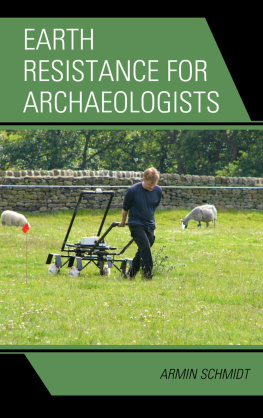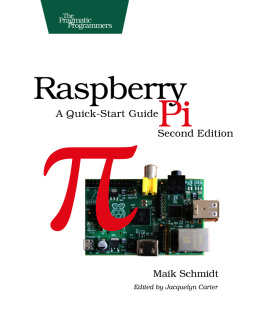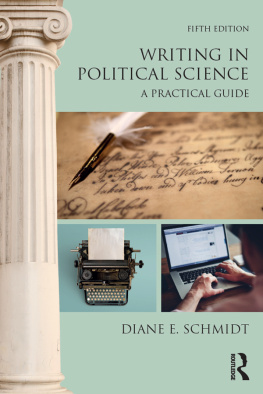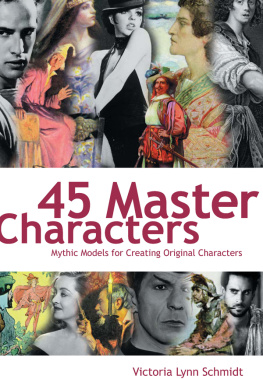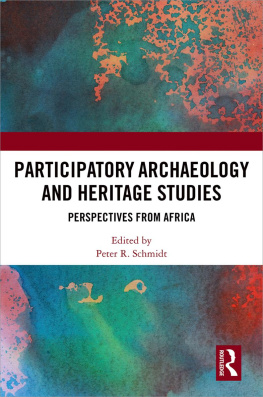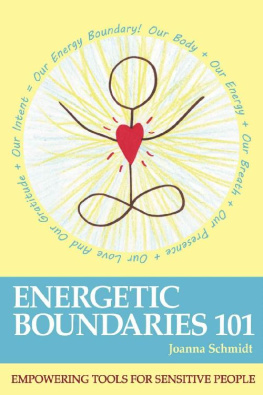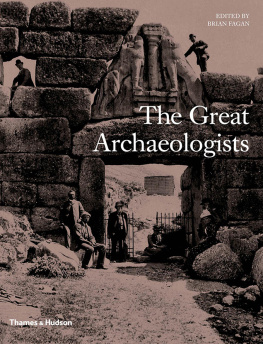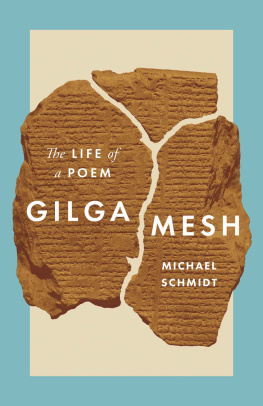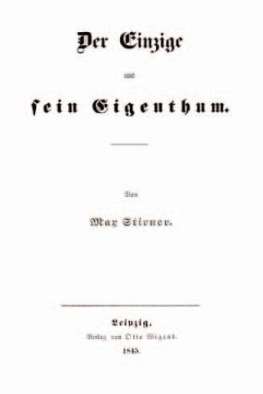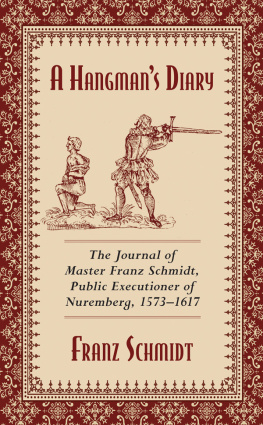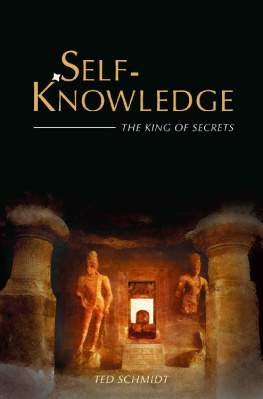Schmidt - Earth Resistance for Archaeologists
Here you can read online Schmidt - Earth Resistance for Archaeologists full text of the book (entire story) in english for free. Download pdf and epub, get meaning, cover and reviews about this ebook. City: New York, year: 2013, publisher: AltaMira Press, genre: Children. Description of the work, (preface) as well as reviews are available. Best literature library LitArk.com created for fans of good reading and offers a wide selection of genres:
Romance novel
Science fiction
Adventure
Detective
Science
History
Home and family
Prose
Art
Politics
Computer
Non-fiction
Religion
Business
Children
Humor
Choose a favorite category and find really read worthwhile books. Enjoy immersion in the world of imagination, feel the emotions of the characters or learn something new for yourself, make an fascinating discovery.
Earth Resistance for Archaeologists: summary, description and annotation
We offer to read an annotation, description, summary or preface (depends on what the author of the book "Earth Resistance for Archaeologists" wrote himself). If you haven't found the necessary information about the book — write in the comments, we will try to find it.
Schmidt: author's other books
Who wrote Earth Resistance for Archaeologists? Find out the surname, the name of the author of the book and a list of all author's works by series.
Earth Resistance for Archaeologists — read online for free the complete book (whole text) full work
Below is the text of the book, divided by pages. System saving the place of the last page read, allows you to conveniently read the book "Earth Resistance for Archaeologists" online for free, without having to search again every time where you left off. Put a bookmark, and you can go to the page where you finished reading at any time.
Font size:
Interval:
Bookmark:
Geophysical Methods for Archaeology
Series Editors:
Lawrence B. Conyers, University of Denver
Kenneth L. Kvamme, University of Arkansas
The Geophysical Methods for Archaeology series aims to introduce field archaeologists and their students to the theory and methods associated with near-surface geophysical data collection techniques. Each book in this series will describe one of these commonly used non-invasive techniques, its applications, and its importance to archaeological practice for the non-specialist.
Volume 1: Ground-Penetrating Radar for Archaeology , Lawrence B. Conyers
Volume 2: Magnetometry for Archaeologists , Arnold Aspinall, Chris Gaffney, and Armin Schmidt
Volume 3: Earth Resistance for Archaeologists , Armin Schmidt
Earth Resistance for Archaeologists
Armin Schmidt

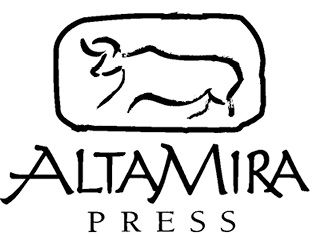
A Division of Rowman & Littlefield Publishers, Inc.
Lanham New York Toronto Plymouth, UK
Published by AltaMira Press
A division of Rowman & Littlefield Publishers, Inc.
A wholly owned subsidiary of The Rowman & Littlefield Publishing Group, Inc.
4501 Forbes Boulevard, Suite 200, Lanham, Maryland 20706
www.rowman.com
10 Thornbury Road, Plymouth PL6 7PP, United Kingdom
Copyright 2013 by AltaMira Press
All rights reserved . No part of this book may be reproduced in any form or by any electronic or mechanical means, including information storage and retrieval systems, without written permission from the publisher, except by a reviewer who may quote passages in a review.
British Library Cataloguing in Publication Information Available
Library of Congress Cataloging-in-Publication Data
Schmidt, Armin, 1961
Earth resistance for archaeologists / Armin Schmidt.
pages cm. (Geophysical methods for archaeology ; volume 3)
Includes bibliographical references and index.
ISBN 978-0-7591-1204-9 (cloth : alk. paper) ISBN 978-0-7591-2293-2 (electronic) 1. Earth resistance in archaeology. I. Title.
CC79.G46S35 2013
930.1dc23 2012043069
 The paper used in this publication meets the minimum requirements of American National Standard for Information SciencesPermanence of Paper for Printed Library Materials, ANSI/NISO Z39.48-1992.
The paper used in this publication meets the minimum requirements of American National Standard for Information SciencesPermanence of Paper for Printed Library Materials, ANSI/NISO Z39.48-1992.
Printed in the United States of America
To Doris
Contents
Acknowledgments
First of all, I would like to thank Prof. Arnold Aspinall, Dr. Chris Gaffney, and Rob Fry for reading the entire manuscript and giving excellent comments. It was Arnold who converted me from a pure magnetist to a multimethod enthusiastmany thanks! I also wish to thank my editor, Wendi Schnaufer, for her patience, encouragement, and interest in this book. The book is also dedicated to my students, whose enthusiasm for archaeological geophysics often matched my own. Thanks also to Prof. Robin Coningham, Dr. Jan Harding, and Dr. Rick Jones for leading the archaeology teams on the case studies presented here and for their permission to use the relevant data. Thanks also to Dr. Roger Walker from Geoscan Research for providing access to the MSP40, for permission to use and reproduce data, and for insightful general support. Stuart Fox, thanks a lot, for fabulous technical support, including on fieldwork spent more often than not in pouring rain, and to Jane Hammond for rallying the postgraduate students. Thanks to my father, Siegfried, for constantly reminding me that the book isnt finished yet, and to my wife for unwavering encouragement despite a complete lack of interest in archaeological geophysics. Large parts of the book were written during my time at Queens College, University of Melbournemany thanks for the excellent research environment and friendship! The book was finished at my parents-in-laws house; thanks to Albert and Mathilde for their hospitality. Last but not least, thanks to the University of Bradford, Department of Archaeological Sciences, for being an invigorating place for seventeen years of my academic career, and for providing the resources to collect and process the geophysical data.
Introduction
Trailing wiresthats probably the first thing that comes to mind when thinking of electrical methods in archaeology. But there is much more to it. While magnetometer surveys are the workhorse of archaeological geophysics (Clark 1996; Gaffney and Gater 2003; Aspinall et al. 2008), and ground penetrating radar (GPR) has become the favorite technique (Conyers 2004) of many archaeological geophysicists, earth resistance methods are key to detecting many other archaeological remains, yet they have not been given nearly enough attention.
This book will redress the balance, giving archaeologists the know-how required to exploit the potential of earth resistance methods. A wide variety of possible uses are explored, including cases in which earth resistance surveys succeeded in mapping buried archaeological remains that magnetometer surveys were unable to detect, or in which they provided a very different view of the ground than GPR surveys could. The examples include prehistoric henges, Buddhas palace at Tilaurakot, Roman forts, Scottish brochs, and many other sites where new archaeological insights were gained from carefully interpreted earth resistance data. The archaeological features that can be detected through earth resistance methods are varied, ranging from ditches, pits, and grave cuts to stone and brick foundations, and even including whole landscapes. While area surveys were traditionally the most common earth resistance method, depth profiling and vertical imaging have become well-developed tools that allow electrical depth investigations in three dimensions. Both measurement techniques will be described in detail.
The challenges faced when using earth resistance surveys are best highlighted in comparison to magnetometer investigations of archaeological remains.
- Magnetic properties of archaeological features are nearly independent of current environmental factors, and results of a magnetometer survey will look the same, whatever the weather. It is quite the opposite for electrical investigations. Earth resistance anomalies are created by moisture variations in the ground and can even depend on weather events that happened several weeks prior to a survey, similar to cropmarks in aerial archaeology. It is therefore crucial to understand how these anomalies are created so that realistic archaeological interpretations can be obtained.
- As with most other geophysical techniques, visualized data from earth resistance surveys are not direct images of the underlying archaeological features. Instead, they are created as a result of the measurement process, which needs to be understood to derive the outlines of the buried remains.
- Magnetic fields of archaeological features exist whether measured or not, and in its simplest form there is not much more to a magnetometer survey than to switch on the instrument and go. Earth resistance measurements are active (i.e., create their own electrical fields), and there are many survey parameters to adjust. For example, one needs to decide on the best electrode configuration for a site or the earth resistance meter has to be adjusted to allow measurements even in difficult conditions.
The knowledge required to interpret earth resistance anomalies and to select instrument configurations will be conveyed in this book. It provides a foundation from which to explore these issues without requiring a degree in physics or mathematics. A balance between the underlying principles and practical examples has been chosen in order to explain the relationship between parameters with as few mathematical expressions as possible. Instead, easy-to-understand analogies are used to illuminate important principles.
Font size:
Interval:
Bookmark:
Similar books «Earth Resistance for Archaeologists»
Look at similar books to Earth Resistance for Archaeologists. We have selected literature similar in name and meaning in the hope of providing readers with more options to find new, interesting, not yet read works.
Discussion, reviews of the book Earth Resistance for Archaeologists and just readers' own opinions. Leave your comments, write what you think about the work, its meaning or the main characters. Specify what exactly you liked and what you didn't like, and why you think so.

